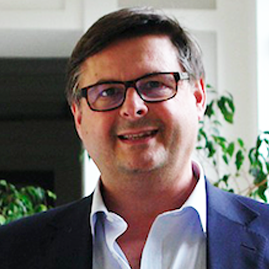Registration (July 19, 2023)
14:00 – 16:00 AM
Open Conference from President of Ho Chi Minh City Open University (July 20, 2023)
08:00 – 08:15 AM
SPEAKERS:

Welcome message from the Chair of SHM&ES
08:15 – 08:30 AM
SPEAKERS:

Keynote speaker
08:30 – 9:00AM
- SPEAKERS: Prof. Francisco Chinesta,
Arts et Métiers Institute of Technology, Paris France

- Title: Towards efficient diagnosis, prognosis and decision making in civil and industrial infrastructures combining physics-based and data-driven modelling hybrid approaches
- Abstract:
Structural systems are nowadays efficiently described from well experienced mechanical models, involving elastic or inelastic behaviors. However, the validity of models, and their predictions, depend on the adequacy between the physical reality and the modeling hypotheses. For example, a structural model that assumes nominal material properties, will fail to describe the response of the structural system when some localized damage occurs, degrading locally the material properties, and then the structural performances. When the system response is observed in numerous locations, and in particular in, or close enough to, those in which the degradation occurs, the associated data can be used for performing diagnosis, and more concretely, for identifying the damage location, its size and sometimes even its severity. In that sense, many publications address diagnosis from the use of artificial intelligence techniques. However, sometimes one is interested in going forward, to make predictions on the basis of the damaged system. These predictions need an adequate model of the existing reality, differing from the nominal one by incorporating the local degraded properties, in the most accurate way. This is particularly of interest when addressing prescription and decision-making, as encountered in predictive and operational maintenance. In large structural systems (for instance vast civil or industrial infrastructures), the number of sensors does not allow the structure coverage at the wished resolution, the one needed for observing the effects of a crack, localized damage or local corrosion, … On the other hand, distributing millions of sensors to reach the scale of the expected localized behavior seems simply unreasonable. Thus, our proposal consists of collecting the right data, at the right place and the right time instant, and then, from these few data, be able to, first, update the model by correcting it; represent the observed reality; and then, perform data-completion, to extend the collected data, from the sensors to the surrounding or hidden areas. This procedure can be mathematically formulated and numerically implemented, by using standard discretization techniques or the incipient physics informed and augmented learning procedures, both revisited in our recent works.
Keynote Speakers
09:00 – 9:30 AM
- SPEAKERS: Prof. Richard Liew
Department of Civil & Environmental Engineering. National University of Singapore

-
Title: Design and Construction of Highrise Modular Buildings
- Abstract: Design for manufacturing and assembly, called DfMA, is a process whereby buildings are designed for ease of off-site manufacturing and efficiency of on-site assembly. This lecture presents the recent innovation in DfMA for volumetric construction of high-rise buildings. Experience is drawn on the recent R&D work and building projects in Singapore adopting prefabricated and prefinished volumetric construction technology. High-rise building up to 56 stories was being constructed using such technology. Both Steel and concrete modular systems and their joint systems will be discussed. Their advantages and disadvantages are compared. Further insights are provided on Lego-like joining methods to enhance the speed of assembling the modules at the site
Tea break
9:30 – 9:45 AM

Speakers
9:45 – 11:30 AM

Lunch Party
11:30 – 12:00 AM

Speakers (Parallel session)
13:15 – 15:15 PM

Tea break
15:15 – 15:30 PM

Gala Diner
18:00 – 20:00 PM

Keynote Speakers
08:00 – 08:30 AM
- SPEAKERS: Prof. Gabriele Milani
Technology University, Milany, Italy

- Title: Innovative and simple limit analysis models for the seismic assessment of historical masonry structures
- Abstract: The keynote speech will discuss some innovative limit analysis approaches for the evaluation of the seismic vulnerability of historical masonries. Particular attention is devoted to limit analysis adaptive upper bound methods and Distinct Element DE approaches in limit analysis. The first is based on a discretization with rigid infinitely resistant full 3D NURBS elements, where the mesh is progressively adapted to reproduce with high fidelity the actual failure mechanism active. Adaptation is carried out with meta-heuristic methods. The second is characterized by the possibility to model masonry as a no-tension material by means of an iterative approach in classic limit analysis with associate flow rule. A modification to take into account the possible non-associativity is also investigated. Several examples of major relevance are discussed, including masonry churches, towers, pagodas, arches and bridges, vaults and domes.
Keynote Speakers
08:30 – 09:00 AM
- SPEAKERS: Prof. Amir H Gandomi
University of Technology Sydney

- Title: Intelligent Structural Health Monitoring and Engineering
- Abstract: Artificial Intelligence has been widely used during the last two decades and has remained a highly-researched topic, especially for complex real-world problems. Evolutionary Intelligence (EI) techniques are a subset of artificial intelligence, but they are slightly different from the classical methods in the sense that the intelligence of EI comes from biological systems or nature in general. The efficiency of EC is due to their significant ability to imitate the best features of nature which have evolved by natural selection over millions of years. The central theme of this presentation is about EI techniques and their application to complex real-world problems. On this basis, first I will talk about an automated learning approach called genetic programming. Applied evolutionary learning will be presented, and then their new advances will be mentioned. Here, some of my studies on big data analytics and modelling using EI and genetic programming, in particular, will be presented. Second, evolutionary optimization will be presented including key applications in the design optimization of complex and nonlinear systems. It will also be explained how such algorithms have been adopted to engineering problems and how their advantages over the classical optimization problems are used in action. Optimization results of large-scale towers and many-objective problems will be presented which show the applicability of EI. Finally, heuristics will be explained which are adaptable with EI and they can significantly improve the optimization results
Tea break
09:00 –9:15 AM

Speakers (Parallel sections)
09:15 –11:30 AM

Closing Ceremony
11:30 – 11:45 AM
Chairs

Lunch party
11:45 – 12:30 AM

1st Day (July 20, 2023)
GRAND TOURENE DA NANG
252, Vo Nguyen Giap street, Son Tra District, Da Nang City, Vietnam
2nd Day
July 21, 2023




